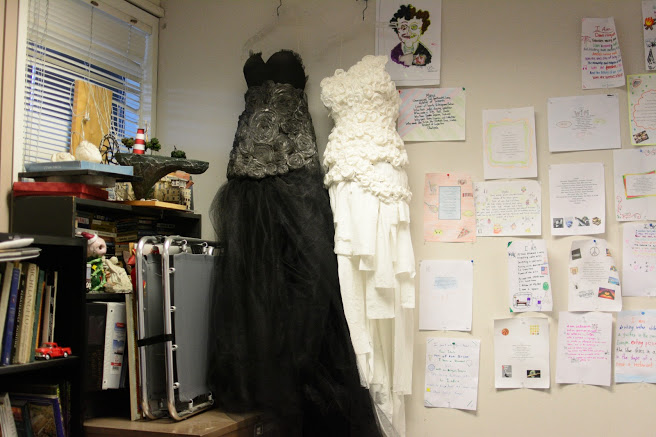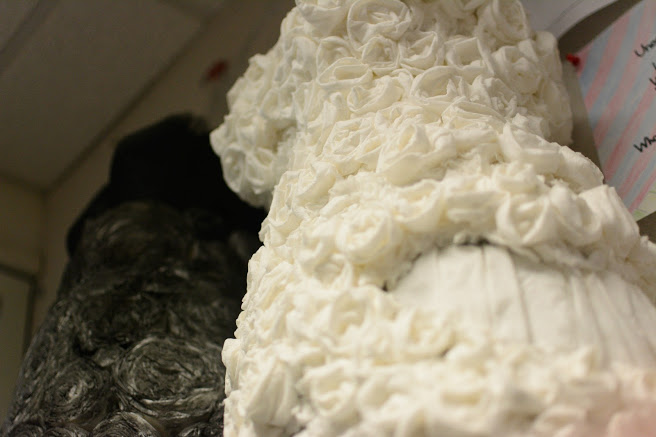Sophomore Divya Santhanam remembers the day she first walked into literature teacher Sara Borelli’s freshman literature class and noticed the vivid decor that filled the room.
“I liked how the room was very distinct, and how when I walked in the first time, there was so much to see,” Santhanam said. “You already got a sense of the teacher’s personality.”
But what particularly stuck out to Santhanam were two dresses in the back corner of the room — a black one made of cloth and a white one made of toilet paper. When she first saw the dresses, Santhanam thought that the class would be making them as projects.
But Santhanam’s hypothesis was wrong — the freshman Literature students wouldn’t be making any dresses that year. The dresses were the product of a class Borelli used to teach at MVHS several years ago: Humanities.

Humanities, a course that was cancelled in 2013 due to lack of enrollment, was a course that combined literature, art, music, and architecture to help students understand how different cultural aspect played a role in everyday life. As a project, the students were tasked with emulating an artist’s style, and two students had chosen Vera Wang, a wedding dress designer.
“Vera Wang used to solely make wedding dresses, but now she works with perfume and jewelry,” Borelli said. “She basically revolutionized the way we look at wedding dresses and brought us out of traditional ways.”
The students went on to create the dresses that Borelli has hung up in her room.
Students have always admired these works-of-art that hang from the back wall, but Borelli has received some unique questions about the dresses.
“Sometimes people ask me if that’s my wedding dress,” she said, with a laugh. “Like of course, I’d wear a dress out of toilet paper.”
While Borelli’s students may admire the dresses for their beauty, sophomore Bhavna Sud came to understand the deeper meanings behind the dresses after she gave a speech on paper dresses for Speech and Debate.
“In my speech, I talked a lot about paper and paper dresses. It doesn’t seem like that interesting of a topic at first, but when you get into the history of these items, it’s a window to our past,” Sud said. “Paper dresses are a good representation of the atmosphere of the 1960s —- people wanted something fun, something new and so when the Scott paper company came up with disposable paper dresses, many women thought ‘why not?’.”
Whether it be through an academic or an aesthetic perspective, paper dresses are cherished by everyone for their beauty and historic meaning.
“Overall, I think paper dresses give people a way to express their beauty and their enthusiasm,” Sud said. “They allow people to express the beauty they feel in life, through a creative medium.”












